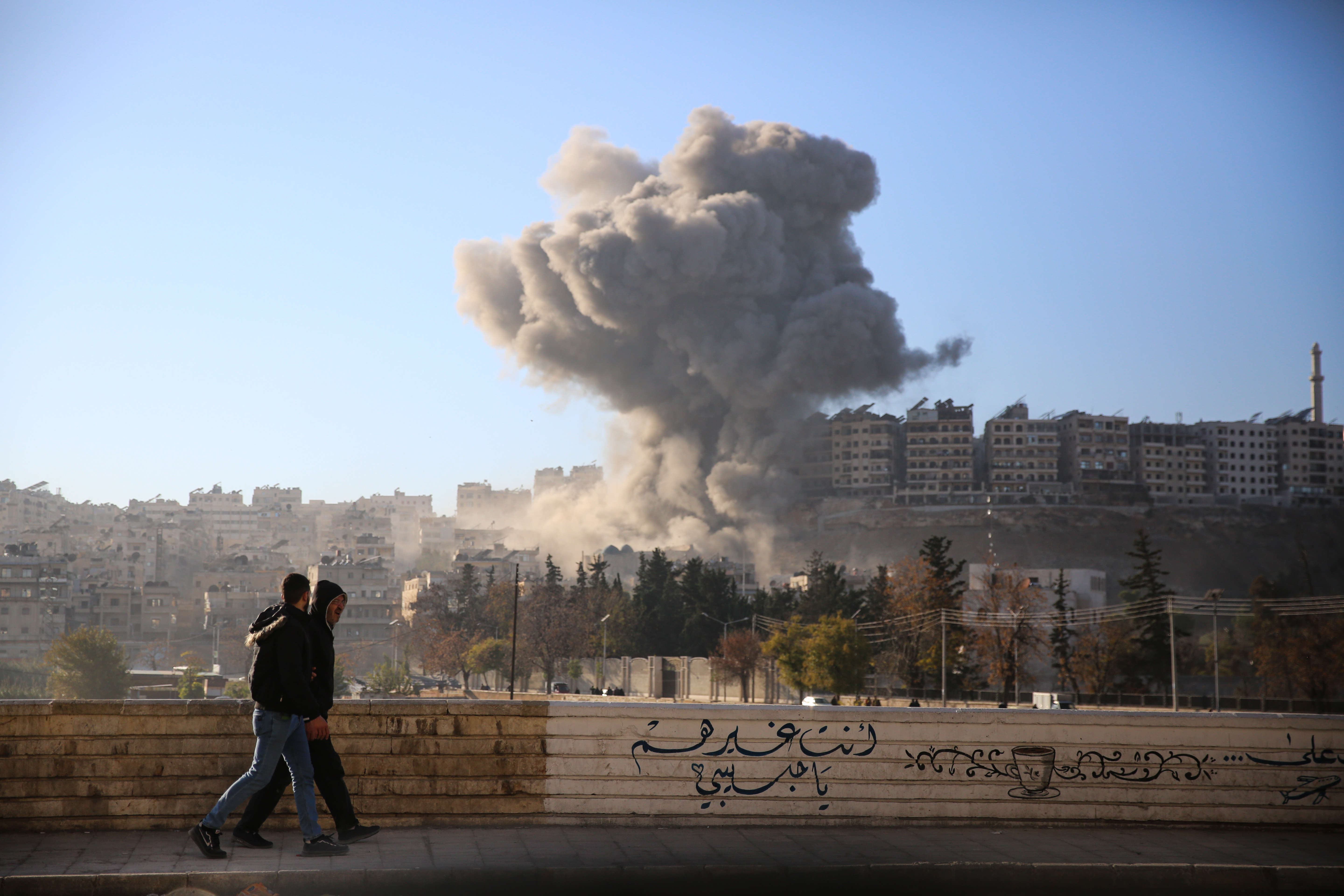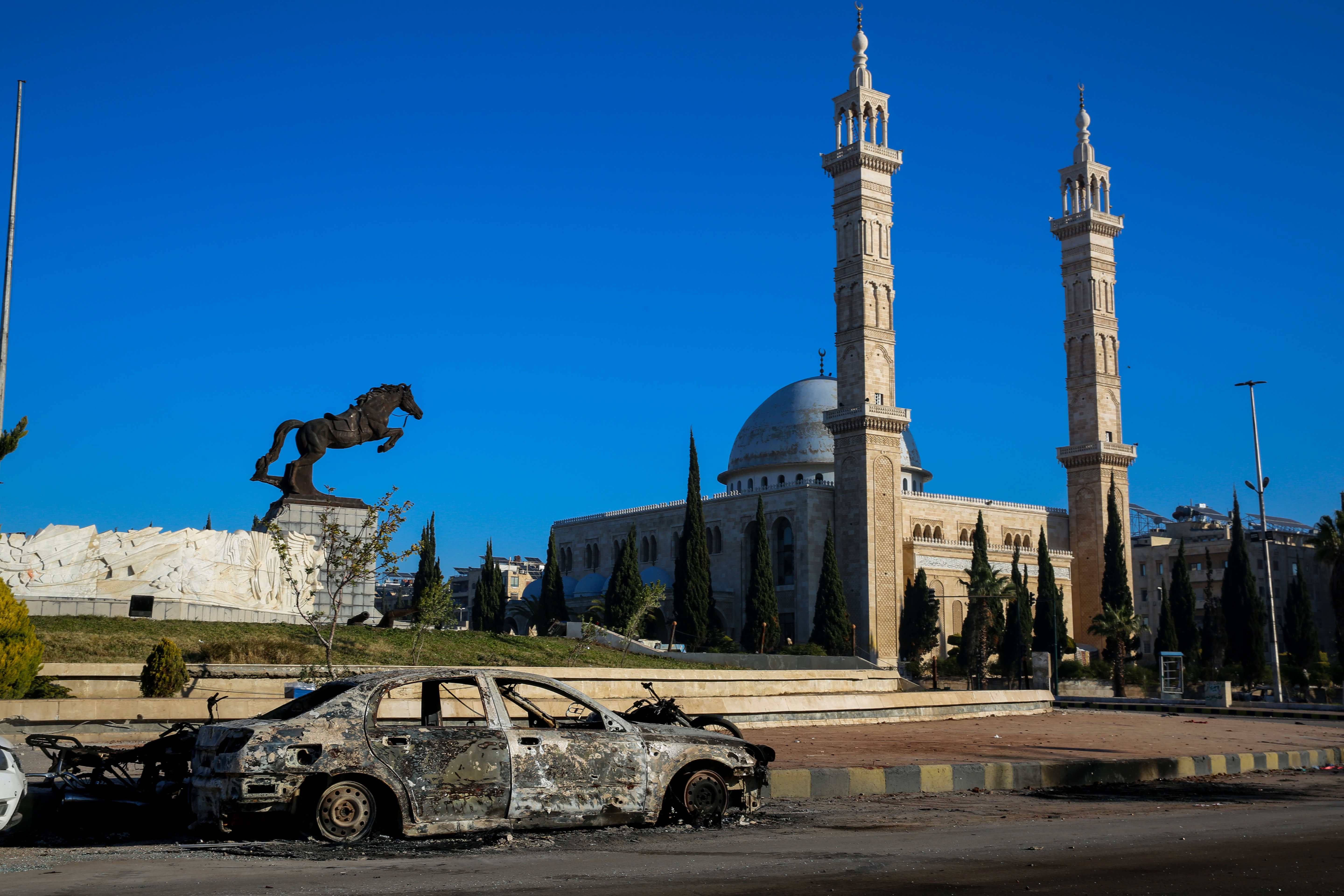The Current Developments in Syria: Domestic and Regional Implications
In this article, Dr. Sherko Kirmanj presents an analysis of the unfolding events in Syria, examining the role of key actors at various levels, whether national, regional, or international. He contextualises these events within a broader geopolitical and historical perspective, thus allowing for an analysis of changes in power dynamics and an anticipation of potential future impacts.
Share


6th December 2024
×
Loaded...
Mandatory Credit: Photo by Juma Mohammad/IMAGESLIVE via ZUMA Press Wire/Shutterstock (14960248g) Aleppo, Syria. 01 December 2024. A street in Aleppo following the capture of most of the city by Syrian opposition forces. The militant Islamic group of Hayat Tahrir al-Sham (HTS) and other Syrian opposition factions have carried out a military operation since Wednesday last week and steadily advanced capturing eastern Idlib, western Aleppo and most of the city of Aleppo from the Syrian government. Russian and Syrian warplanes have intensified attacks on opposition-held Aleppo and Idlib as part of the Syrian government forces' counteroffensive against the rebels Syrian opposition forces advance into Aleppo, Aleppo Governorate, Syria - 01 Dec 2024.
Mandatory Credit: Photo by Juma Mohammad/IMAGESLIVE via ZUMA Press Wire/Shutterstock (14960248d) Aleppo, Syria. 01 December 2024. A burnt car in Aleppo following the capture of most of the city by Syrian opposition forces. The militant Islamic group of Hayat Tahrir al-Sham (HTS) and other Syrian opposition factions have carried out a military operation since Wednesday last week and steadily advanced capturing eastern Idlib, western Aleppo and most of the city of Aleppo from the Syrian government. Russian and Syrian warplanes have intensified attacks on opposition-held Aleppo and Idlib as part of the Syrian government forces' counteroffensive against the rebels Syrian opposition forces advance into Aleppo, Aleppo Governorate, Syria - 01 Dec 2024.
Authors
On November 30, 2024, the Islamist militant group Hayat Tahrir al-Sham (HTS), officially designated as a terrorist organisation by the United States (the U.S.) and several other states, launched a major offensive on Aleppo, Syria's second-largest city. HTS, with historical affiliations to al-Qaeda and the Islamic State (ISIS), and reportedly backed by Turkey, quickly overwhelmed the Syrian Army. Within days, HTS and its allies had seized the city, including strategic infrastructure such as Aleppo’s airport. Simultaneously, the Turkish-supported Syrian National Army (SNA) initiated attacks on the Kurdish-led Syrian Democratic Forces (SDF) in northern Aleppo province, achieving significant territorial gains. These developments have altered Syria’s political and military landscape in ways that are likely irreversible.
This article examines the implications of these events for key local and regional stakeholders: the Syrian government, Turkey, Iran, Russia, the U.S., Israel, and the Kurds in Syria. It contextualises the events within broader geopolitical and historical frameworks to assess the shifting power dynamics and potential future outcomes.
The Assad Regime: Challenges to Survival
The survival of President Bashar al-Assad’s regime during the initial phase of the Syrian civil war (2011–2020) was largely contingent on the decisive intervention of three key allies: the Iranian Revolutionary Guard Corps (IRGC), the Lebanese Hezbollah, and the Russian Air Force. These forces provided critical support that prevented the regime’s collapse. However, recent developments in Aleppo reveal a significant weakening of this alliance:
- Iran’s Diminished Role: Continuous Israeli airstrikes in the last several years targeting IRGC installations and senior officers in Syria have severely undermined Iran’s operational capabilities.
- Hezbollah’s Retrenchment: Israel’s ongoing campaign against Hezbollah since October 2024 has eroded the group's military strength, particularly through targeted assassinations of its leadership, including Hassan Nasrallah. Hezbollah has redeployed its fighters from Syria to Lebanon following the October 2023 Gaza conflict.
- Russia’s Divided Focus: Russia’s extensive military engagement in Ukraine has limited its ability to provide sustained support to the Assad regime.
Moreover, the Assad regime suffers from acute internal fatigue, exacerbated by prolonged conflict and economic collapse as well as economic embargo by the U.S. and its allies. While some Syrians reluctantly support Assad as a counterweight to jihadist and Salafi factions, this fragile loyalty offers limited protection against further destabilisation.
Turkey: Strategic Calculations and Objectives
Turkey emerges as a central actor in the unfolding Syrian crisis. President Recep Tayyip Erdoğan is said to have maintained close ties with opposition groups in Syria, particularly those concentrated in Idlib and other Turkish-controlled territories. Turkey’s recent actions appear to serve multiple objectives:
- Containment of Kurdish Ambitions: Turkey perceives any Kurdish territorial gains as an existential threat. It has consistently sought to undermine the SDF and prevent the consolidation of Kurdish autonomy in northern Syria.
- Influence Over Syria’s Future: By supporting the SNA and supposedly supporting HTS, Turkey aims to reshape the political and military balance in Syria. This strategy also seeks to compel Assad to reassert control over SDF-held territories along the Turkish border, thereby diminishing Kurdish influence.
- Regional Reassertion: Turkey’s marginalisation from initiatives such as the India-Middle East-Europe Economic Corridor (IMEC) and its exclusion from Israel-Hamas negotiations have prompted it to reassert itself as an indispensable regional power. The alleged support for HTS could potentially be interpreted as a strategic attempt to shape regional dynamics.
- Domestic Considerations: Erdoğan’s government faces growing anti-Syrian sentiment at home. Expanding Turkish-controlled areas in northern Syria may facilitate the repatriation of Syrian refugees, addressing domestic political pressures ahead of future elections.
Turkey’s actions reflect a strategic calculus that seeks to maximise leverage over multiple fronts, including its complex relationship with Russia, its Kurdish adversaries, and other regional powers.
The Decline of Iran and Hezbollah
Iran and its allies, long central to the "Resistance Front," have faced unprecedented challenges. The October 2023 Gaza war and Israel’s military response have severely weakened Iranian influence in Syria. This decline mirrors the devastation Iran experienced during the Iran-Iraq War (1980–1988).
The strategic alliance between Iran and Syria dates back to the 1980s and has been pivotal to Iran’s geopolitical ambitions. Syria provides a critical corridor for Iranian support to Hezbollah in Lebanon, enabling the latter to pose a direct threat to Israel. However, the ongoing erosion of Iran’s capabilities in Syria, coupled with the weakening of Hezbollah, has jeopardised this strategic axis.
Without robust Russian support, Iran’s ability to sustain its efforts in Syria is increasingly doubtful. While Tehran and Hezbollah are likely to intensify their efforts to stabilise the Assad regime, their capacity to achieve meaningful results is limited.
Russia: A Constrained Power
Russia’s military intervention in Syria in 2015 was instrumental in turning the tide of the conflict in Assad’s favor. However, its current involvement is constrained by its preoccupation with the war in Ukraine. Despite a resumption of Russian airstrikes following HTS’s attack on Aleppo, Moscow is unlikely to replicate its earlier level of engagement.
Russia’s strategic priorities in Syria include preserving its naval base in Tartus, maintaining influence in the Middle East, and preventing the further fragmentation of the Assad regime. While Russia may pressure Turkey diplomatically to limit HTS’s territorial expansion, its ability to enforce such constraints is uncertain.
The Kurdish Dilemma
The Kurds, represented primarily by the SDF, find themselves in a precarious position. Despite suffering significant losses, the SDF retains control over substantial territory in northeastern Syria. However, the current dynamics pose significant challenges:
- Geopolitical Isolation: The SDF’s reliance on the U.S. support has become increasingly tenuous, particularly in areas west of the Euphrates. The U.S. appears reluctant to confront Turkish-backed forces directly, leaving the SDF vulnerable.
- Strategic Dilemmas: The prospect of collaborating with regional powers to counter the Iranian "Shiite Crescent" presents opportunities but also significant risks. Without firm commitments from the U.S., Israel, and Gulf states, the SDF may struggle to capitalise on such initiatives.
The Kurds must navigate these challenges carefully, balancing their relationships with external actors while safeguarding their territorial and political interests. However, there is a possibility that the United States and Israel might utilise SDF forces against the Iranian front and its allied resistance to disrupt the Shiite Crescent by gaining control over the Iraq-Syria border, specifically the Deir ez-Zor–Albukamal–Al-Tanf triangle. If sufficient support financially (by the UAE and Saudi Arabia) and militarily (by the U.S.) is secured, Kurdish involvement in this conflict could ultimately work in their favor.
The Role of Israel and the U.S.
Israel and the U.S. have emerged as indirect beneficiaries of the current turmoil in Syria. Israel, in particular, has capitalised on the weakening of the Iranian-led "Resistance Front." A prolonged conflict between opposing anti-Israel factions in Syria aligns with Israel’s strategic interest in preventing any single actor from dominating the region.
However, Israel and the U.S. are wary of Turkey’s growing influence. Turkey’s alleged support for HTS and its broader ambitions in Syria complicate the regional balance of power, necessitating a cautious response from both nations.
In a nutshell, the recent developments in Syria signify a critical juncture in the country’s protracted conflict. The weakening of the Assad regime and its allies, coupled with Turkey’s assertive actions, has reshaped the regional landscape. While the outcomes remain uncertain, the implications for local and regional actors are profound.
As the dynamics evolve, external actors such as Saudi Arabia, the UAE, and Jordan may become increasingly involved, further complicating the situation. For the Kurds, these changes present both risks and opportunities. Their ability to navigate these challenges will determine their role in the region’s future.
The unfolding crisis underscores a broader geopolitical reality: new states often emerge of turmoil. The key question is whether the Kurds and other stakeholders can leverage these developments to secure lasting advantages.
The information and opinion contained in the articles on the CFRI website are solely those of the author(s) and do not engage the responsibility of the centre.
To cite this article : Shirko Kirmanj, "The Current Developments in Syria: Domestic and Regional Implications", Centre Français de recherche sur l'Irak (CFRI), 06/12/2024, [https://www.cfri-irak.com/en/article/the-current-developments-in-syria-domestic-and-regional-implications-2024-12-06]
Related Articles
Adresse : EISMENA, 36 rue Eugène Oudiné, 75013, Paris
contact-eismena@eismena.com
+33 1 40 19 94 60




